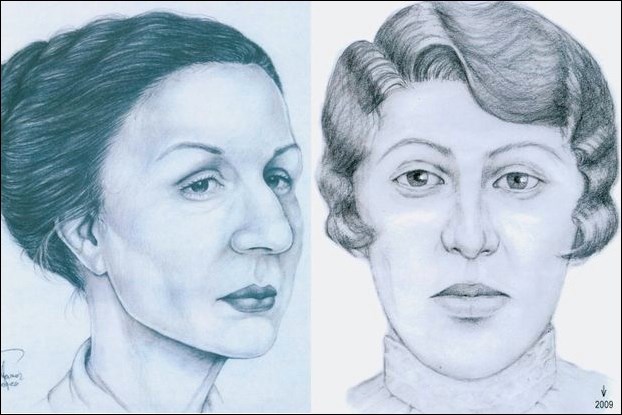On June 29, 2006, on the west corner of 108th Street and Central Avenue in the Saskatoon neighbourhood of Sutherland, a work crew discovered a womanвҖҷs body while excavating fuel tanks from an old gas station. She had been murdered, wrapped in a burlap sack, stuffed into a barrel and thrown into a well. The Shore Hotel once sat on the site where the womanвҖҷs body was found.
The Saskatoon City Police determined that the вҖңWoman in the WellвҖқ had been killed sometime in the early 1900s. Her body and clothing were relatively well-preserved due to the mixture of water and gasoline from the gas station that was later built on the site.
Carole Wakabayashi, a clothing and textile historian, helped the city police to date the womanвҖҷs fitted jacket, high-collared blouse and long skirt to somewhere between 1910 and 1920. A broken golden necklace was found with the body. Also found rolled up in a ball next to the womanвҖҷs corpse were a manвҖҷs vest and trousers.
Dr. Ernest Walker, forensic archeologist at the University of Saskatchewan, determined that the victim was a Caucasian woman between the ages of 25 and 35, five feet and one inch tall, with a prominent nose and light brown to reddish hair. Walker extracted mitochondrial DNA from the womanвҖҷs remains, which investigators hope to match to a living descendant. Police unveiled two facial reconstructions hoping that someone might recognize the woman from old family photos. Police subsequently received about 30 calls from people across Canada and as far away as France looking for a missing mother, grandmother, or great aunt, but no DNA matches have been made to date.
The Shore Hotel was erected in May of 1912 by William W. Shore in the village of Sutherland. Located about three miles east of Saskatoon, Sutherland was founded by the Canadian Pacific Railway (CPR) in 1908. By the end of 1912, its population had grown from 100 to 1500. Over half of the residents were employees of the CPR.
вҖңI have a good business here which has been growing by leaps and bounds,вҖқ Shore told the Saskatoon Daily Star in January 1914. вҖңSince the advent of street cars, the receipts have doubled.вҖқ The City of Saskatoon built a new streetcar line to Sutherland that year, and people waited for the arrival of streetcars inside the Shore Hotel. The hotel must have had an unsavory reputation because, on January 14, 1914, the Sutherland Town Council requested that City of Saskatoon build a separate shelter, stating, вҖңвҖҰ it is not conducive to the morals of the community to have ladies and children awaiting the arrival of cars in the Hotel.вҖқМэ
Prior to 1914 when water mains and sewer lines were extended from Saskatoon to Sutherland, water was either delivered by horse-drawn tanks to barrels in the kitchens of the townвҖҷs homes or hauled from wells. The well on the Shore Hotel site may or may not have been in active use at the time of the womanвҖҷs murder.
The Shore Hotel changed ownership three times during 1914, at a cost of $50,000 for each sale. The hotelвҖҷs value plummeted when Prohibition was declared by the provincial government in 1915. The Town of Sutherland took the property in 1919 when the taxes werenвҖҷt paid. In the fall of 1927, the town advertised in the Star-Phoenix that the old Shore had been declared a public nuisance. Tenders were sought for the demolition of the hotel in November 1927.
Мэ
Who was the Lady in the Well? Was she a prostitute in this rough-and-tumble town filled with railway workers? Was she an employee at the Shore Hotel, killed by a man at the hotel? Was she a transient herself? Was the crime a domestic one? Sadly, despite the valiant efforts of the Saskatoon Police Service, we will probably never learn her identity.




